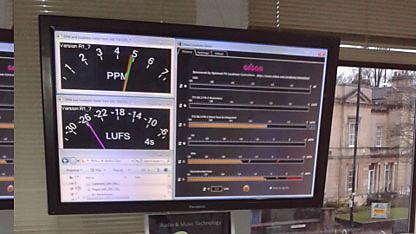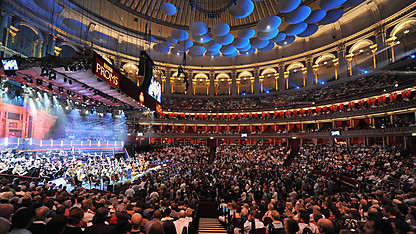Audio and Music Technology at the BBC
Hi I’m Ian Astbury a senior investigations engineer in BBC Technology and I work with a small team that provides technology expertise across BBC Audio & Music (A&M).
As well as supporting existing production facilities we aim to help A&M in finding new and innovative ways to enhance the experience for our audience.

LUFS (Loudness Units with respect to Full Scale) meter
Much of our work is behind the scenes – for example planning new studio facilities or modifications to existing parts of what we affectionately call the ‘broadcast chain’.
It’s an apt name to describe the huge number of stages that our programmes pass through on their way from studio to transmitter or internet feed.
A large part of the chain is concerned with routing audio and data (for example text describing a programme item) to the right place at the right time.
Then there are the more controversial stages in the chain such as the audio processing that we use so that our listeners can enjoy their favourite programmes as much in their cars and kitchens as in a quiet living room.
The whole subject of loudness and dynamic range - the ratio of loud to quiet parts within a programme - is something that we are currently reviewing.
Recent work in partnership with other broadcasters and the European Broadcasting Union (EBU) is refining the way in which audio levels are measured, linking them more closely to subjective loudness rather than signal peaks.

The Proms available on Radio 3’s HD Sound internet stream
One of the great things about radio today is the diverse ways of listening which (apart from making our job more interesting!) gives us the flexibility to innovate.
A good example of this was the launch of Radio 3’s HD Sound internet stream. Initially seen as an opportunity to showcase our audio quality at its best during the 2011 Proms season, it has since become a permanent feature of BBC iPlayer.
Just set the bandwidth to ‘HI’ on Radio 3’s live or on-demand streams and enjoy superb sound via a 320kbps AAC audio codec.
Another topic generating a lot of interest is ‘radio visualisation’ in which video content from our radio studios is added to a station’s online output.
What began as simple webcam feeds is now becoming more sophisticated and can provide good quality video. Any presenter who thought that working in radio meant no worries about hairstyle had better think again!
Other aspects of our work focus on the logistics of making programmes – how best to capture and transport the audio and the systems required for editing, scheduling and playout.
An increasingly important part of this is managing the metadata associated with the audio – in itself a huge subject.
In all of this we value our close partnerships with other BBC divisions and external service providers.
Of course, this is just a brief overview - the diverse nature of our work and the collective experience within our team means that we are occasionally approached for advice on some very obscure subjects!
Over the coming months our team will be blogging in more detail about some of our projects.
Ian Astbury is a senior investigations engineer in the Audio and Music Technology Controller team.
For more behind the scenes information on developments at the BBC, visit the BBC Radio Blog and Research & Development Blog.
BBC's Blog
- BBC's profile
- 28 followers



